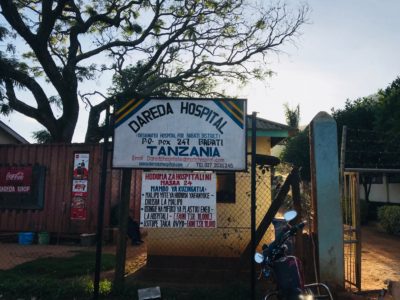For the next two weeks, I will be posting a series detailing my experience as a guest at Dareda Hospital, a small privately run health care facility in the Dareda district of Tanzania located about three hours outside of the Arusha region.
The hospital leadership graciously agreed to host me for two weeks in their guest house thanks to a connection with my former employer. As part of an informal arrangement, I offered my consultative services, for whatever that’s worth. I’m grateful for the opportunity as this has been the highlight of my stay in Tanzania thus far.
Dareda Hospital, established in 1948, is run by the Catholic Archdiocese of the Mbulu region in Tanzania. Religious leaders from various congregations comprise much of the staff and management. The hospital, with a capacity of 200 beds and an average daily census of about 130, serves a community far beyond the borders of its district. The hospital leadership consists of a small tightly knit team of administrators and physicians who maintain close personal and professional relationships with one another. There exists a genuine respect and camaraderie amongst them that is apparent in their everyday interactions.
In the inpatient hospital, there are 4 wards – pediatrics (kids under 12 years), female, male and maternal child. Each ward is a large open room with beds lining the walls – similar to US emergency rooms except without curtains separating the bays. Seeing this made me recall the many debates we used to have about converting our double bedded rooms to single rooms for our patients. Here at Dareda, just having privacy curtains would be a luxury.
In addition to the inpatient wards, the facilities include:
- Triage area
- Outpatient department
- Pharmacy
- Physiotherapy
- Lab
- X-ray
- 1 Operating room
- 1 Procedural room
- 1 Endoscopy suite (thanks to the generous donation of endoscopes by my former employer)
- Small canteen (a.k.a restaurant) serving staff and patients’ families
- Administrative offices
- School of nursing managed by the Archdiocese

There are two convents on premises supporting the various congregations. The hospital grounds are lush with well manicured greenery, providing a serene environment for patients, families and staff.
The core leadership team of the hospital is among the most dedicated I’ve encountered. Almost all live on premises and are often found discussing patients and operational improvements off hours. The leadership structure is familiar. It consists of a Hospital Director (CEO) leading the executive team, a Medical Officer In Charge (Medical Director) overseeing the clinical providers, a Matron (Chief Nurse) overseeing nursing staff and an Administrator (COO) responsible for overall operations and non-clinical departments.
What I gathered in my first forty-eight hours at Dareda Hospital is that with this new enthusiastic leadership team, the organization is ripe for change. The timing is right for strategic planning. Despite the many obstacles, the leaders are optimistic, sophisticated in their thinking and hungry for new ideas to develop a plan for growth. Over the next few days, I’ll take a deeper dive into learning their operations and clinical activities so as to ultimately develop a set of recommendations for them.
Stay tuned for a more intimate view of Dareda Hospital in my next post in this series.




